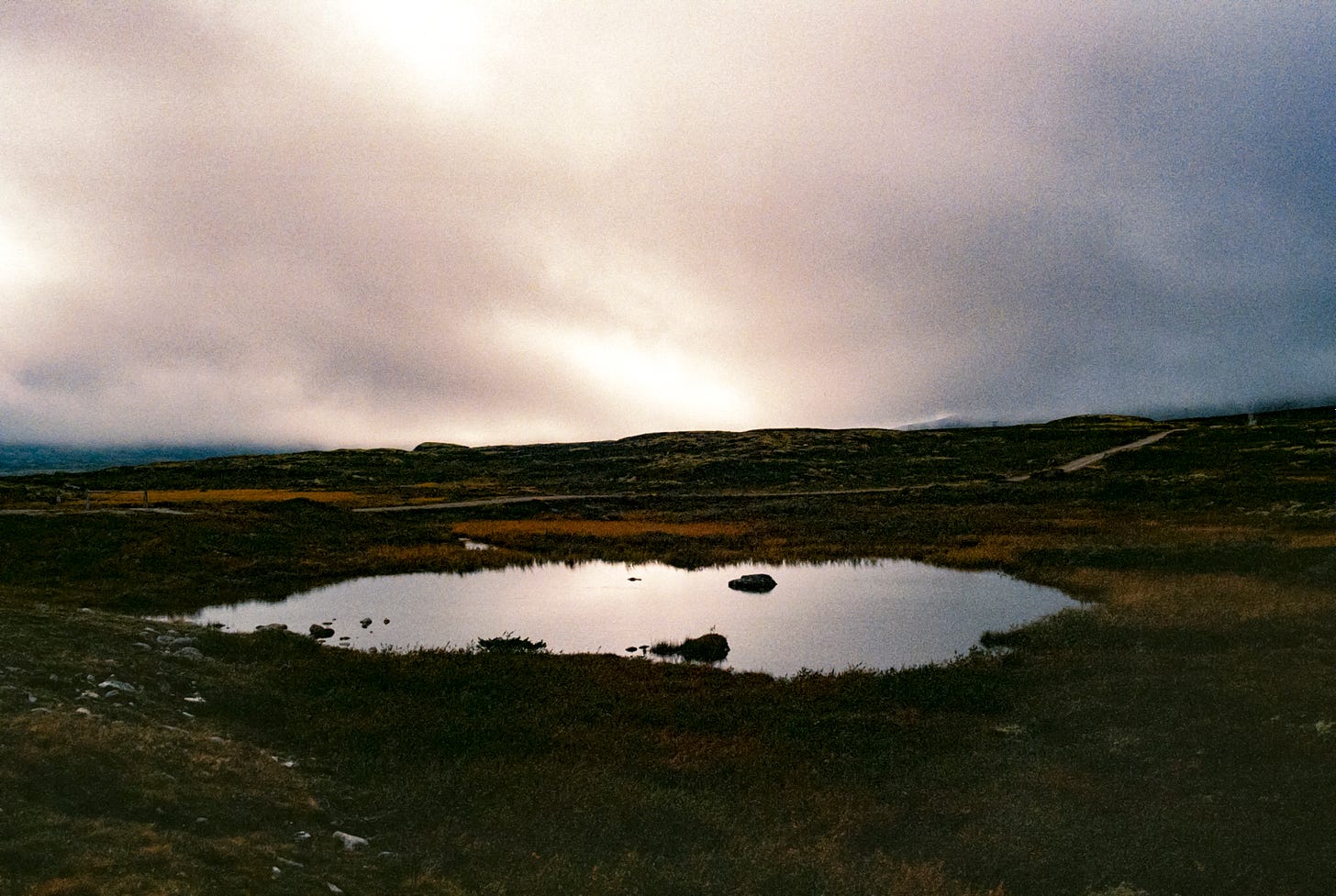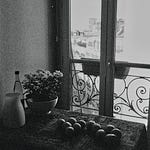Navigating life today was supposed to become easier with technology. Yet finding the way really isn’t always easy. Generalised life advice without a clear context and knowledge of situations might suggest something like: simply go from point A to point B, or just shift your internal energy then everything around you will just change, or if any challenges are arising, everything in your life is up to you to do something about. The use of everything in those notions is one of the more extreme forms of socially isolating attitudes accepted today. The belief business has become so popularised and accepted, such familiar phrases sound as if an A.I. bot were formulating the responses out of very different mouths. Nuance and context have to be considered by at least another engaged consciousness present, and not half-tuned out, to form a true relational connection. Our human lives are relational, as we also find in nature, living organisms are not found existing in a vacuum. Therefore some belief business spiritualists use suffering as a means to create dust, perhaps having others “eat their dust” on the way to some kind of economic top.
Even if you have built all the internal resources to manage new territories and find ways, there are times such as the one we are living in now that indeed seem paradoxical through incongruences between what something is promised to be and how things really are.
For example, there have been several instances I witnessed amazing cultural work that was not valued and other instances grand sums supported results that were posing as great but everyone could see lacked some element of spirit and feeling. As Tom Wolfe wrote in The Painted Word a look on contemporary art being in a similar situation to The Emperor Has No Clothes. Few people want to be the first one to point out the obvious because they may receive some kind of attack. The invisible double bind few willingly acknowledge makes a taboo out of describing reality carefully and really makes a lot of not-so-funny, funny business possible. Then there are ideas such as if everyone loves it, it must be really good, or something can only be good if the access to the right people exists.
That last bit veers towards a bit of a sociopathic ethos and leans into muddied areas that are not necessarily true. So when people say things are complicated, I have often found that to mean a few things including: submission to a kind of pathos accepted in systems and structures, and the way perception plays into how someone or something is looked at. The vision one sees the world or other people with is often coloured by the nature of desire, and with the internet another layer of fantasy.
The appearance is one thing and then the reality isn’t necessarily a symptom of a superficial culture but rather a reenactment of The Emperor having no clothes. While we do not have an emperor ruling the taste of people, there are the academies which do not always reflect reality as well. Instead, these places have planted canons of discourse. I am pretty sure we all know what canons are used for!
The time we are looking at involves conflicts of visions, grouped by opinions that are supposed to tolerate differences in values, yet systemically through economics rise up or push down using concepts of virtue while silencing or denying voices or visions. And while there are no bad notes in music, there are tones which can only be sustained together until the dischord becomes intolerable. Who will be the odd one in the crowd to stand up and ask the question, sometimes silenced by misunderstanding the action to be attention seeking and projected as additional disruption when in reality the dissonance is just too much to take. In this way, the principle of allowing free-speech and open air sharing is what technology was again supposed to be promised for and the level of cognitive dissonance relative to channels of media create a situation where people may start to stand up and walk out “of the show”.
My dear, good-hearted friend, Tracy Goodheart, runs a company called Socially Authentic. Her mission is to carve space and encourage people and businesses to be who they really are on social media. This was strange to me at first because I had assumed everyone, and even myself, was being totally “me” online. All the things I have experienced, really did occur. But yet the whole truth is truly difficult to fit into some of these mediums. By including various perspectives, not just my own, the sharing can become long and then clipped off either by the format or by shorter attention spans. The loss of nuance, expected speed of delivery, or ability of moving through the world, often gets blamed on technology. I cannot see this as being technology’s fault, but rather a reliance on it being less fallible than humans and the denial of the realities people are facing on the other side of the screen. Perhaps this kind of mentalisation through image and video fatigue pushes a certain kind of human focus that may bring people to spaces of accepting more automation, more digitisation, less human contact, less real empathy and more fuzzy or projected empathy. The root of these questions ties into trust. Basic trust, a concept I was recently revisiting is formed in our earliest relationships, perhaps even before language.
In addition to accessing the memories that can afford personal insight to basic trust, there is the issue of objectification on the internet. Eros is a funny subject to bring up, particularly between the sexes as some engage in defensiveness or seediness right away. Experimenting is par for the course, in the sense not much can replace lived experience. Any taboos around Eros are still, quite often conflated with blame. “It was her dress that made me behave that way.” And finding out what is true, because that can be subjectively true, but relationally strained. In that several cultures have supposedly given more permission around choice and exposure, would the consequence of such choices then be to accept “that’s how it is?” Would it not be possible for complete respect and appreciation without coveting or taking certain liberties be possible? I would think, communication could solve everything! And we have more ways to communicate.
What’s quite strange about achieving philosophical liquidity and understanding is people don’t always seem to know if that is a trustable person to be around. As people begin to move again in the world, the cultural meeting points have a demand on the development of internal arts practices. The level of emotional intelligence needed of liquid societies is quite high. And in the absence of such development, indeed, certain complexes arise. One of the trends occurring in the handling of such complexes are ritualisations and ceremonies. Humans seem to ache for something the cocoa ceremonies, full-moon gatherings are sold for. A pursuit of connection, which is completely possible and accessible every single day, in even the most banal task is now another marketed product. The marketing of spirit is what I mean by the belief business. And even as people balk and critique the churches, the impulses are still there. Some of these gatherings are less freeing. The spaces people seek safety in, can become double binds. There are countless stories of unethical scenarios, getting covered up, denied, and because there is an appearance of good, the silencing and isolating effect on someone that speaks up can really do the opposite of nourishing ones spirit. This also happens when non-profit board members seek to overthrow or take over something someone else built.
I would not beg to wonder where the social justice marches are for that, but why are these patterns continuing when the elephant in the room can be called out, the dust in the rug can be washed out, and the energy of our social lives can become clear by our own actions.
There’s no wrong thing in gathering people for rituals. We all know people are seeking ways to gain income, connect, and provide for themselves. And yet often in some of these gatherings is a conflict for the seething hatred for capitalism. While the issues are clear, to “throw the baby out with the bathwater,” seems to be a popularised social belief that begs one to wonder if history books are sitting dusty on the basement shelves in libraries.
Focusing on the beauty of the everyday and freeing oneself from certain cultural practices sequesters people off into “tribes” or groups that form biases and blame shift against other groups. This behavior doesn’t feel more sacred. Instead the air of inclusivity often becomes another canon of discourse aimed at annihilating and social dominance. The acceptance parroted reveals itself as absent and enacts a revolutionary sort of faith witnessed as acts of violence or damage to someone else’s property with the self-righteous indignation. There is then no wonder, social conformity impulses draw up senses of distrust in an inverted society. Handling these machinations without becoming tyrannical, even about peace, has inspired me and many I meet to wonder what the best course of action could be.
The last years’ corona lockdowns and reopenings have made the squeeze and release, squeeze and release pattern of a boa constrictor an open invitation to the seeking behind the curtain as to the motives of such actions and what they produce. As rats are often fed to snakes, what kind of energetic and spiritual digestion is actually going on beneath the appearance? This is often quickly disregarded as terrain for conspiracy theorists but what about private investigators? What if the odd man in the crowd pointing to the emperor having no clothes is right?
On the more nuanced level, observed personality changes have been more benevolent in some, and incited more fight behaviours in others. Finding the emotional awareness to say “that is not ok, and I have empathy for one who commits violence” is something I feel could be a benefit, yet I can’t really prescribe a remedy that will fit everyone. Sometimes the perpatrators have more protection than those subjected to their violence; and that is also not ok.
However, the reason I had picked up a camera in the first place, was to cultivate the ability to engage in the everyday beauty and find ways, for example, a middle aged woman can have loads in common with both a young girl and an elderly man. And in those little details are the essential truths and principles governing our lives no matter how hypocritical, unjust, and strange life seems. Because to transform such conflicts, I have only found the heart energy of forgiveness, beauty, and care to be truly useful.
There is also a business of belief around everything occurring in one’s life having great meaning or no meaning. Or that if you “just” change your vibe, your life will alter. That kind of accepted cultural narcissism again denies the beauty in the everyday differnces by focusing on staunch individualism. This kind of glass wall or invisible barrier can surely protect a sensitive soul but also set the motors into motion for isolation and self-absorption. A natural, permeable fabric might be a healthier choice.
Another possible way to bust belief business fluff is what Rudy Harper calls: finding ways to sneak up on yourself. I do that by going out of my way to go to an area I usually do not. So the other day, I decided I shall deliver a pair of shoes I sold through Finn.no to the buyer. She was a busy mom, and I needed a walk. The idea seemed great because I would also veer into a neighbourhood I typically don’t. My hope was some magical thought could “sneak up on me.” Bursting my personal glass wall with new information I did with a frustrating experience walking in circles and remembering the beauty of connection and shadows. The banal task became a ceremony without an entry fee. The only cost, time and calories.
As things turned out, I had a great deal of trouble finding the right door to leave the shoes at. Reluctantly allowing Google Maps to assist my journey, I managed to find the general proximity, walked through the gate and following some sense of intuition turned right, and saw a door number that did not match the #4 I was seeking. Around and around the courtyard I went, building up more confusion at each turn. The building numbers followed no apparent logic, and the unseasonably warm sun evaporated more water from my body to the point I became aware I was quite stressed. Seeing only a young girl on a bench as everyone else was quite busy drinking and I didn’t want to interrupt them, I sheepishly approached the girl for help. Noting her uncertainty to my Norwegian, (I’ve been told I sound Latvian or Russian speaking Norwegian), I asked if she spoke English. She got excited so we continued on from there. We both looked at the map and decided the #4 should be between 2 and 5, since the other side of the courtyard had numbers 17 and 22. Since where “4” should be was behind a gate, the girl suggest I try entering the courtyard from that side of the street. I quickly found those buildings without the correct number and decided to admit defeat and contact the recipient of the shoes, thwarting my intention to do her a favor and incite more need for her attention to deliver the shoes for her to be there when she got home. Quickly I learned entering the gate as I had was correct, and then the first door on the right, was the correct door. Thinking I had already tried the first door on the right, I went through the gate one more time and looked closer, to then find a #4 hiding behind an overgrown topiary.
Upon the relief of connecting to the right spot, I looked up and realized not only the bush had obscured the number, but the beautiful sunlight had blinded me from seeing it. The staggeringly fantastic improv group, Too Much Light Makes the Baby Go Blind, came to mind. Anyone who’s worked in culture can know why creating can be so difficult to make happen. The conditions of our plentiful lives confront the constraints of time and almost always: economics. These economic situations are often painted onto the culture workers everyone supposedly loves, wants, and cares about but blames for their own starving-artist disposition. This socially accepted state of affairs is completely within the realm of alleviation. The value, even if an abstraction within the conceptual realm of numbers, is not only subjectively sensory but shared. Much like looking into the sun, even with sunglasses, could obscure a number from sight. One of the more peculiar features of this tension is the perception culture producers (aka artists) must suffer because they always had. This myth of the tormented creator is something people end up doing to each other. Sure, certain personalities perform choices with varying results. And I often find myself wondering why other professions are assumed to be more valuable. Culture seems to reflect the way the nature gets used. Perhaps since they’re so close together, culture and nature lose their distinctions and get trashed and dumped on in the same way. The resulting trashiness or poisoning effects of the culture also in turn let off foul effects to the people around and the nature. The consequences of rifling through trash are often far out of people’s minds. Culture and society stand to gain a lot from each other. Back to the shoes:
Laughing, I turned one last time to thank the girl and apologise for my flabbergastedness and she giggled. I said well at least we learned something today, and she enthusiastically replied, “yeah! sometimes you have to look behind bushes to find what you’re looking for.” Yes, that is exactly right. Sometimes we have to look beyond the obfuscations, or even past the light and into a shadow to find what we are looking for. That’s why I find the current cultural focus on lightness of being and happiness above all at the root of the rise of interpersonal and internal issues.
Perhaps that is what people mean when they say reality is complicated, even though it seems so direct and accurate in even such a small little story. Maybe things are complicated because the mental pictures of projected ideas form imagined perceptions that are not the deeper current of reality. Knowing this difference, and really clicking into it doesn’t really seem to occur magically through rituals, retreats, meditation, self-study or education alone. But that some kind of spark occurs when engaging directly with the happenings in everyday life. That light fires from within. And it’s a light that seems easily put out by luxuriance, escapism, bullying, traffic, or sensory overload. But that spark, is there even if one is hungry, thirsty, tired, hurting and is often activated or remembered through error.
Error, or even the concept of failure, when reframed gives deeper access to the real and the relationship within oneself and the world around. The distinctions between appearance and realness is the sparkling dazzle of symbols, archetypes, and meanings are at least holoscopic in that the image of the being is inherently merging layers and perspectives from several angles into a singular plane. This field we refer to as the image plane or what is seen. And to see fully what is in front and around is a personal business of being able to recognize the unique value and beauty in everything. So while people focus on self love, self value, ok sure. But what about focusing that energy on the world around. If, and I really mean if, the world is a projection of our perceptions, then what would connect us to self love and value more than placing love and value outside. But again, the doubts I have around such belief business concepts typified and recapitulated is the way people see is also implicated by lineages, geological resonances, memories, dreams, desires and how easily coloured a vision of someone else can be when an expectation or desire is unmet. That is where I find the greatest tragedies as well. Instead of mere transactionality, a deep diving into the moment, the cerebral cortex offers the capacity to process this holoscopic visual field that makes language alone difficult to employ.
Words themselves are not poor, they are full of history. The distances and numbers of transformations a meaning goes through are all part of that sign. And in that way, the constitution of the reality present today seems best processed by the entirety of a being. In this way, I often wonder if artificial constructs or artificial intelligences will ever achieve what the soft tissues can permeate, and if the cerebellum or base functions of survival are becoming activated temporarily and temporally as humans transition from the mechanisms of industrialisation to the institutionalisation of technology. The technocratic transformation has involved the plasticisation of our bodies. Molecular functions are already becoming plastic. I don’t feel this is totally lost cause yet, but we are standing at several points of no return that require a quite activation and engagement with our humanity.
While the space of escapism as a coping mechanism lends itself to a despot of use and abuse relationships, I have rarely witnessed self and spiritual actualisation in such sequestered off from daily life activities. Instead some kind of ghostly eating of other peoples’ energies occurs, and the odd formation of celebrity cycles upon itself again as elected bodies perform as symbols and archetypes en mass. But out of mass, those characters are the people surrounding you all the time. Every single person in your life is a specially cast character in a story you’re writing together.
Thomas Demand’s photographs of paper forests come to mind as cultural examples to the limits of our present day densities of awareness. Bump into any of those limits and the sensation of having bounced into the wire mesh in VR Headsets, or as Jamie Grace Davis referred to electric cow fences. The line of energy can zap you, but if you can see the boundary, then you can learn to navigate from an enclosure of being someone’s livestock into a different zone of existence. Airports are a bit like portals as well, composed of routines around controls. Not so many years ago a traveling installation made the phenomena of being a cattle herded through gates obvious. The funny part about humans is they can actually become creative with such gates but tend to conform their behavior not from the forms of controls themselves but by the psychic thoughts. Fearing judgement becomes a double bind even if moments of play or zen are always within reach. Intelligence and governance are inherently psychic realms, and such as the adage that what is not appreciated is lost, we have to appreciate our agency and responsibility while we still can.
There are really a great number of metaphors that never end: neighbourhoods, fences, energy fields, so on and all are valid. Of course those who take such concepts to heart or eye-roll them away are both right. Rightness of being is not a mutually exclusive deal with competing contracts. However groups tend to mentally create those to justify the actions against others. Subtle violence is everywhere, and I often wonder how much a feeling sense of a word comes from the actual meaning or social/psychic charge around it. Those associations seem up for grabs these days. And while Facts are non-compete, like encountering a sculpture in space, sounds in a performance, colours of a painting or image, they exist regardless of what anyone thinks about it. The presumed subjective thoughts remain objectively relatable. And while psychic and behavioural choices are hard to prove even when monitored closely by A.I. and algorhyms, the fibers of common sense are up to each of us to spin and work with. In this way I always felt like humans were weaving the fabric of reality together. It’s not a show we are passively watching through projection, but an action we are fully capable of transforming psychically and mechanically with our awareness.
This is why I feel free speech is so important. A solid swatch of fabric is a bit like a brutalist architecture piece, which is very different than any other form of architecture or pattern. And instead of throwing babies out with bathwaters, or igniting fires in the minds of people, we could actually dive into the fabric of our beings and do some work psychologically to regain our agency in creating reality together. Expertise can illuminate everyday interest, yet reciprocity of learning can flow more easily without the staleness of ancient hierarchies, and there, out of the confusion of fog or stress of uncertainty, new realities are born.
















Finding the way